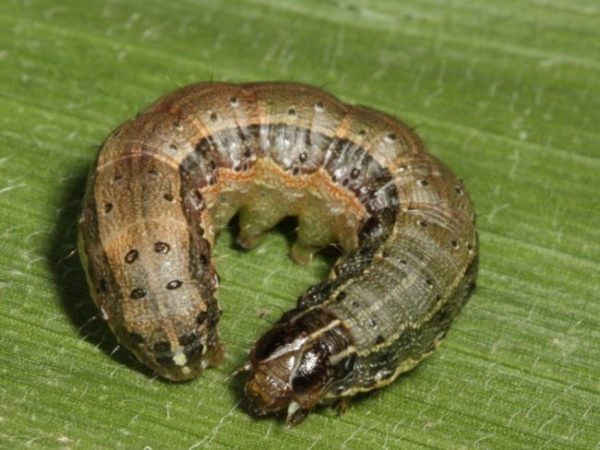Reports that a plague of the non-indigenous Fall Armyworm spreading through South Africa have been prevalent over the past two years, and the creatures have now made their way into the Western Cape’s sweetcorn crops.
Indigenous to Central and South America, the Fall Armyworm (or Spodoptera frugiperda) has been making its way through the greater parts of Western and Central Africa since 2016. While in Zambia, the larvae wiped out entire fields of crops. The larvae are known for being particularly devastating to crops such as cotton, millet, sugarcane, sorghum and various vegetables.
The Department of Agriculture has now confirmed that there are “high numbers” of Fall Armyworm moths as well as their larvae present near Clanwilliam in the Western Cape, and farmers have been urged to carefully monitor their crops for any presence of the little worms.
Farmers have been advised to monitor the presence of the worm in autumn especially, as the Fall Armyworm earned its name due to migrating during this season.
The Department of Agriculture first noted the presence of the worm in 2017, when farmers in the Free State attempted to find a pesticide in South Africa to get rid of the pest. At the time, there was no registered pesticide available to deal with the scourge.

In favourable conditions, the lifecycle of the Fall Armyworm ranges between 24 and 30 days. The number of generations occurring in an area will vary as older moths die out.
The Fall Armyworm has a set of four large dark spots on the upper surface of the last segment of its body that forms a square. The face of the mature larva is marked with a white inverted ‘Y’ shape, which distinguishes it from other caterpillar pests. There are several stages in the lifecycle: the laying of eggs; the larval stage (which consists of six larval developmental stages called the instars); the pupal stage; and the moth stage.
The egg is dome-shaped, the dorsal surface (upper part) body of the larva is brownish, the pupa is reddish brown, and both males and females have the appearance of silver-white hind wings. There is sexual dimorphism in the adult stage, with males having forewings that have distinct white spots while in females it is uniform.
The older Fall Armyworm larvae eat the smaller (younger) instar larvae when food is scarce and larvae are crowded. This cannibalistic behaviour is a strategic mechanism to reduce competition by making more food resources accessible and indirectly increase the fitness of the larvae. Flying predators like birds and insects that spend most of their time in crops are the most common predators of these larvae, which feed on crops’ leaves.
As this species is invasive in Africa, it has no known natural enemies.
Picture: SANBI

